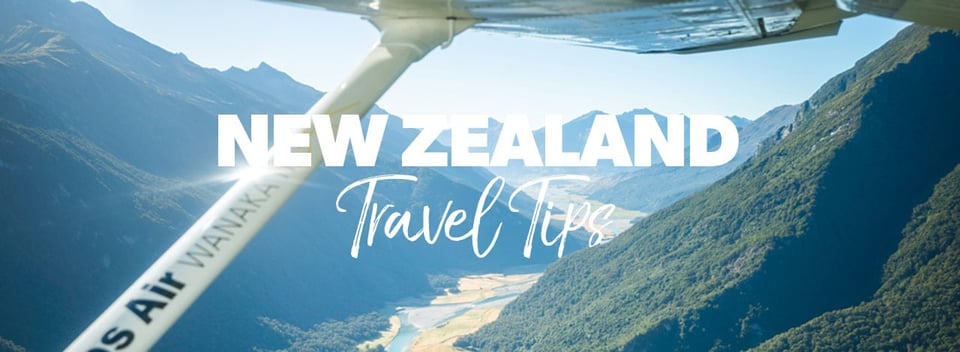
Travel Tips for Hiking in New Zealand
A trip to Aotearoa/New Zealand is for many a once in a lifetime bucket list experience, a chance to see world-class scenery and experience the amazing culture of the last country to be inhabited in the entire world. With such a diverse array of scenery and over 30% of its landmass dedicated to National Parks, New Zealand is a hikers paradise. Here at New Zealand Trails we’ve been sharing our favourite parts of New Zealand with our guests for over a decade and have perfected small-group travel in New Zealand. On our all-inclusive hiking and adventure tours we make it our mission to help our guests experience the real New Zealand and we’re here to share our top tips. While it is almost impossible to have a bad trip to New Zealand, here are some expert travel tips to make sure your trip runs as smoothly as possible so you get the most out of your time in our magical country.
Best time to visit
New Zealand is a stunning country to visit all year around, with each time of the year offering its own unique perspective of the country. During summer in the North Island, you could be mistaken for thinking you were on a tropical island in Fiji or French Polynesia, with warm sun-filled days and golden beaches as far as the eye can see. In the colder months of June until September, the South Island turns into a winter wonderland, the snow-covered Southern Alps mountains towering above almost everywhere you go and plenty of skiing on offer.

New Zealand's pristine National Parks are hard to beat, especially in Spring!
However, if you’re here for hiking, and want a perfect combination of mild weather and smaller crowds, then periods between the main seasons make the ideal time to visit for the savvy traveller. October and November, which is Springtime in New Zealand is a wonderful time to visit. Snow still caps the mountains which provides a wonderful backdrop for all our favourite hiking trails which are now opened again after the winter months. In the rolling fields below lambs are everywhere, all coming together at golden hour to frolic under the setting sun. The main crowds of the summer season don’t generally arrive until late November either so many of the trails and small country townships are quiet, with locals excited to welcome people back after the winter. Days are also getting longer and warmer, offering perfect hiking conditions without the increased heat of summer.
This is also true in our Fall/Autumn months of March-April, which offers the most settled weather of the year. Down in the South Island, the Fall colours are on full display this time of year, with magnificent yellow and red leaves lining the many lakes and rivers making hiking in New Zealand at this time of year a dream. Perhaps surprisingly, the water temperature in both the lakes and the ocean often reach their highest in March, with the warm Pacific currents only reaching our shores in late summer while the lakes have been exposed to six months of heat. Not much beats a late afternoon swim in Lake Wanaka before having a glass of Central Otago Pinot Noir and watching the sun disappear over the mountains.
Must See Destination
Starting where we left off, Wanaka is the often-forgotten little brother of Queenstown which somehow manages to avoid the majority of the crowds and maintain its small-town charm. Only an hour's drive over the Crown Range from Queenstown, Lake Wanaka and its namesake township is a stunning oasis on the edge of the Southern Alps Mountain range. A favourite hiking destination of locals from all over New Zealand, it has a population of just under 10,000 people, meaning it has a small-town feel but still has plenty of amazing bars, restaurants and cafes, most of which are conveniently located right on the lakefront. Boats offer tours to several of the small islands inside the lake which have unique flora and fauna while walking, cycling and hiking trails run for miles along the shores of the lake itself. The town is also the gateway to several world-class trails, such as Roy’s Peak and Rocky Mountain, and to Mt Aspiring National Park.

We love exploring Rocky Mountain on our small-group hiking tours.
Another must-see destination is the coastal town of Kaikoura, located 3 hours north of the South Island's largest city, Christchurch. Set on the edge of the Pacific Ocean, the unique geography of the Kaikoura region means the nearby mountains rise directly from the sea, where their base extends up to a mile below the surface creating an ocean trench right on the coast which is a haven for marine life. In fact, the translation for Kaikoura in the local Maori language is “ Eat (Kai) Crayfish (Koura)” a local form of lobster which is found in abundance here, along with other seafood delicacies such as Paua (abalone), Oysters and Blue Cod. But while famous for its seafood, it’s Kaikoura’s protected marine species which are its main attraction.
The trench off the coast of Kaikoura is also home to resident populations of New Zealand Fur Seals, Dusky Dolphins and Sperm Whales, as well as many other species that visit on their annual migration to the Southern Ocean. Both the Whales and Dolphins come right in close to shore and can be seen on boat tours or even scenic flights. The Fur Seals fish in the trench also spend their days lounging on the rocks around Kaikoura, with several great viewing spots to observe these fascinating creatures. With a new coastal highway recently completed and several trails around the area, as well as delicious cafes and restaurants on the coast, Kaikoura is one of our favourite spots to visit on our all-inclusive New Zealand tours and a must-do for anyone visiting the South Island.

Swimming with dolphins in Kaikoura on our adventures around New Zealand.
On the opposite side of the South Island Punakaiki is another unique location which is a favourite stop of ours on a journey along the West Coast. Deep in the heart of the Paparoa National Park, Punakaiki is a tiny settlement set in temperate rainforest, making visitors feel like they’ve just been transported back to the Jurassic period. Palm trees and Ferns line the coast, which is made of limestone and has been crafted by the ocean into incredible natural formations. The Pancake Rocks is the most famous of these, with giant stone pillars and caves formed exposing the many layers (hence the “Pancake”) which have built up under the ocean millions of years ago. These formations also continue inland, with the Pororari River Track nearby which follows a giant ocean-carved canyon through the forest, one of the best day hikes in New Zealand and another reason why we love Punakaiki.
Getting Around
Most people underestimate how big New Zealand is, with the country being as long as the West Coast of the USA. Add in the fact that there is no such thing as a straight road here due to all the geological features impeding the most direct route, and getting around the country is often not as straight forward as many people expect.
Renting a car or motorhome is a popular option for many and holds the romantic allure of the open road and freedom to roam but it’s not always quite what it’s cracked up to be. Here in New Zealand, we drive on the left which for many of our overseas visitors is a brand new experience that can catch you out if you’re not careful. Our notoriously narrow and winding mountain roads can also be difficult to manoeuvre, especially in a large campervan if you aren’t highly experienced. Add to this the fact that camping is actually quite heavily restricted and only available in specific locations, and the dream of self-drive freedom can all come crashing down.

Though certainly picturesque, our winding roads can be tricky to navigate.
Due to our relatively small population of only 5 million people, Public Transport is also quite limited in the South Island in particular and although it is a good option for those not wanting to drive it doesn’t allow for much flexibility. The best form of public transport is the several train journeys which still run, including the Coastal Pacific from Christchurch to Picton via Kaikoura and the world-famous TranzAlpine which runs through the mountains from Christchurch to Greymouth on the West Coast. These are very scenic journeys and a great way to fully focus on enjoying the countryside, but the limited network makes it difficult to use as the only form of transport.
The difficult logistics and challenges of self-navigating New Zealand are exactly why here at New Zealand Trails, we love small-group travel. Forget the stress of arguing with the satnav or the tricky logistics of planning the perfect itinerary and let us worry about the details. Over the years we've been sharing New Zealand with our guests we've perfected small-group travel and are experts in providing you with the trip of a lifetime. Let your expert driver worry about the roads so you can sit back and enjoy the adventure. Stay in some of the best and most beautiful accommodations across the country and sample New Zealand's hospitality at its finest. It's the ultimate New Zealand adventure, all in comfort and style!
New Zealand Travel Essentials
A visit to New Zealand always includes a range of different activities and climates, with a normal day commonly featuring a hike in the mountains followed by a gourmet meal at a local restaurant. This can make packing difficult so here are some tips from us locals about what to pack for your New Zealand hiking trip.
Clothing-wise, the climate here is variable with changes common throughout the day so it pays to have a range of options. A lightweight, thin rain jacket is a great option to have on hand at all times, more so as a windbreaker when out on the trails. They don’t take up much space and are easy to slip on and off, which is common when on undulating trails where only certain parts are exposed to the wind. Light trousers are also ideal for these conditions where it can go from warm to cool quickly with the change in altitude. Merino layers are perfect for New Zealand conditions as they retain the warmth but also breath. A good pair of hiking boots or trail shoes will also come in handy even for short hikes. For evenings, smart casual clothing is the norm for visiting restaurants and bars, New Zealanders prefer their comfort to high fashion which suits our relaxed personas.

We love to share our favourite spots on our New Zealand hiking and adventure tours.
New Zealand and Australia also have a different power plug from the rest of the world so getting at least one adaptor is essential to ensure you can use any electronic equipment such as chargers. These can be found in most countries or at the airport although they are generally more expensive there. Although phone cameras are very good these days, a high-quality camera is also a great option particularly if you are a nature or bird lover.
While cash is still accepted, cards are now the most common payment method here and international cards work almost everywhere except for a few tiny towns and markets etc. It is always advised to carry some cash for these situations but definitely don’t change a lot of money at the airport as the fees are exorbitant and it is much cheaper to just withdraw it from an ATM when you need it.
Finally, New Zealanders have a lot of colloquialisms and slang we use which can seem confusing at first, so here are a few to get you started which will put a smile on a locals face when you use it.
Kia Ora – This is a common greeting in the indigenous Maori Language which translates to “Be Well” although has evolved to mean everything from Hello to Goodbye and even Thank You. It's pronounced “key-or-a", said as one word.
Sweet As – Basically meaning “all good” again it is used as a common expression meaning good or great. If someone asks how you enjoyed something, “Sweet As” is a great response.
Strangely, “Mean As” basically means the same thing so can be used once you become an expert.
Kiwi – A slang word for New Zealanders, named after our National Bird. We are proud of this term as it came to prominence during the World Wars when New Zealand was establishing our own national identity away from the English.
Flat White – This is what a white coffee is called here, referring to the fact there is milk but not much froth. A Latte has more froth and a Cappuccino the most, while a Long Black or Americano refers to your standard black coffee.
Tramping – A “Kiwi” word for Hiking. Its origins are unknown, but most believe it’s a cross between Trekking (another word for hiking) and Camping, as doing overnight hikes with a backpack and tent is a favourite pastime.
Getting Here
Many people think of New Zealand as a world away, but with the modern world of a huge network of international flights and beautiful possible stopover destinations en route, it has never been easier to travel here. You can now fly directly from most major cities in the United States, including recent additions of flights to Auckland from New York, Chicago and Houston as well as all West Coast hubs.
Flights range from 11 to 15 hours, although Air New Zealand has a modern fleet with several class options, and most flights are timed to run overnight limiting jetlag. Flights are cheaper in the shoulder seasons of October-November and March-April, with the best fares usually on offer 9-12 months in advance. Air New Zealand also has very reasonable change fees with often only payment for fare difference required. There is also plenty of flight options via Australia and Asia If you want to visit as part of a multi-country trip.

There are many ways to travel but here at New Zealand Trails we choose comfort and style!
For those who'd rather break up the long flights, there are also several options for stopovers in the Pacific while also enjoying a couple of days in a tropical paradise en route. Hawaii and Fiji both have plenty of flights in either direction, although if you to split the flight as close to halfway as possible then Tahiti is the perfect spot.
With all that said, with so many options to choose from, finding the perfect flight plan for you can be difficult but our guest services team are here to help. If you're exploring New Zealand with us on one of our all-inclusive tours our team will be there to help you with all the details. Whether you need to book flights and accommodation or even just want some tips on the best places to eat, our team are here for you.
So what are you waiting for? If you'd like to find out more about our New Zealand hiking tours grab a copy of our FREE BROCHURE HERE or get in touch with Jodi, she's the friendly voice on the other end of the line who'll help you plan your dream New Zealand adventure.
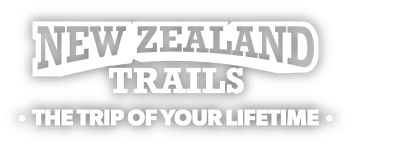




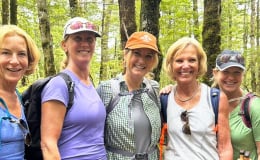
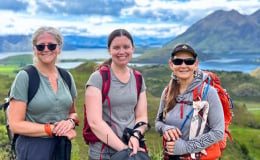
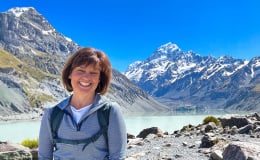
Comments
Let’s talk – we’d love to hear what you think. Pop your details in below and have your say.
No one has commented on this page yet.
RSS feed for comments on this page | RSS feed for all comments